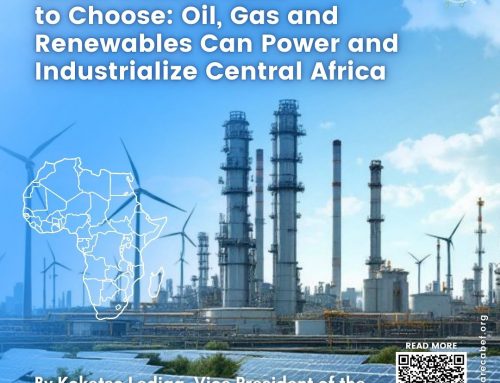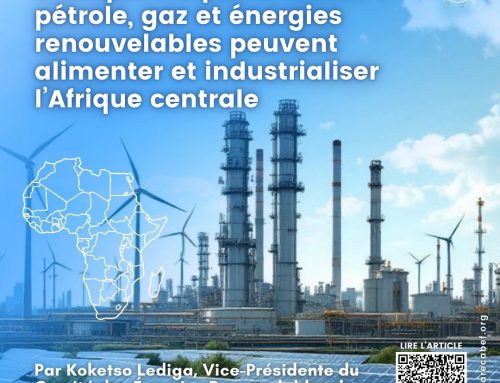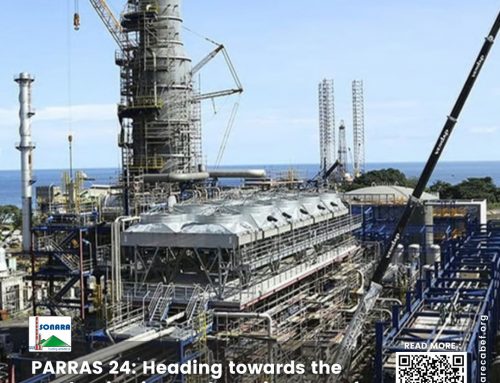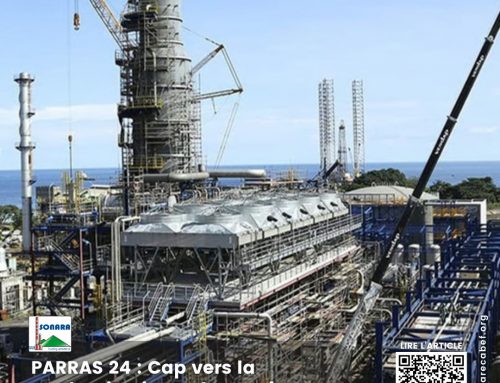Natural gas is a fossil fuel that forms at the bottom of oceans. It is the hydrocarbon that emits the least greenhouse gases into the atmosphere during consumption because it contains less carbon compared to other fossil fuels. It is a gaseous mixture of hydrocarbons, primarily composed of methane, but typically containing a certain amount of other higher alkanes, and sometimes a small percentage of carbon dioxide, nitrogen, hydrogen sulfide, or helium. Natural gas is a significant asset, and its consumption has been growing for the past 30 years. It is used for domestic purposes (heating, cooking, hot water production), but also in industry and transportation, and its strong methane potential is an asset for the energy transition.

Composition of Natural Gas
- Electricity Production Process Using Natural Gas
- Exploration of Natural Gas Natural gas deposits exist in various locations around the world. The first step before extracting natural gas is to discover the gas fields. To do this, gas companies conduct subsurface inspections, identifying possible deposits with the help of cartographers and seismologists. This geophysical study allows them to assess whether a deposit is worth exploiting:
- Does the deposit contain a lot of natural gas?
- Will its exploitation be profitable?
- How are the sedimentary layers arranged to extract the gas?
- What is the depth to access the deposit? If subsurface exploration reveals favorable conditions, natural gas extraction can begin. Natural gas wells can be exploited for the long term, averaging 15 to 30 years. The exploitation of a deposit ends when the extraction cost exceeds the selling price of the natural gas.
- Exploitation of Natural Gas When favorable conditions are met for a natural gas deposit, the installation of elements needed for its exploitation is initiated. This includes:
- An extraction well and a drilling rig;
- Gas pipelines;
- Networks of pipes to collect the natural gas. Then, drilling is carried out, which can reach depths of up to 6,000 meters. Horizontal or vertical drilling and hydraulic fracturing techniques are used. In most cases, natural gas flows out of wells due to pressure, although equipment to pump natural gas may also be installed. Once the gas reaches the surface, it is transported to a processing unit.
- Processing of Natural Gas Since deposits often contain other substances, the raw natural gas collected at the wellhead must be processed. During processing, corrosive elements such as sulfur, hydrocarbons, or helium must be removed. Next, the gas must be completely dry, with no trace of liquid. This is a crucial step for integrating natural gas into the network. It is also at this stage that an odor is added to natural gas; naturally, it is odorless, but for safety reasons and to help detect leaks, a chemical process gives it an odor.
- Transport of Natural Gas Once extraction and processing are complete, it is time to transport the natural gas. This stage begins with compressing the natural gas, allowing it to flow safely at an appropriate speed for supplying homes and businesses. The transport is done through land pipelines, submarines, or LNG carriers from extraction areas to consumption zones. For long-distance transport via pipelines, compression stations are installed along the pipeline network. When transport via pipelines is not possible, natural gas is shipped in boats known as LNG carriers. For this, the gas is cooled to -161°C, becoming liquid and referred to as LNG (liquefied natural gas).
- Storage of Natural Gas Before being delivered to the end consumer, natural gas passes through storage sites located near extraction or consumption areas. Gas storage helps meet the expectations of producers and consumers. By storing part of the extracted gas, producers ensure they can deliver stable volumes throughout the year, thus guaranteeing continuous supply. Natural gas is stored in specially designed tanks in various types of storage sites:
- Above ground: in storage tanks used to hold gas at atmospheric pressure in liquid form;
- Underground: in depleted reservoirs, pressurized gas is injected into old hydrocarbon reservoirs that are naturally impermeable and converted for storage; in aquifers: this involves reconstructing the geological equivalent of a natural deposit by injecting gas into a porous underground layer containing water, capped by an impermeable layer forming a tight cover, all shaped like a dome; in salt cavities: this technique involves creating a large underground artificial cavity (between 100,000 and 1 million m³) in sedimentary rock composed of rock salt through dissolution with fresh water (leaching). Thus, the gas flowing to consumption areas may not necessarily be used immediately. It can be stored for reuse when demand justifies it. Today, natural gas storage is an essential logistical link to ensure a country’s energy balance.
- Distribution of Natural Gas The gas is then delivered to usage areas, including residential and commercial heating systems, cooking in stoves, and industry. High-pressure distribution pipelines are used to transport large volumes of natural gas to power plants.
- Receiving Natural Gas and Electricity Production Natural gas is transported to the power plant via pipelines, where its pressure is adjusted and its quality is checked upon arrival. The process of producing electricity from natural gas is an efficient thermodynamic process, widely used in power plants like the Kribi Gas Power Plant in Cameroon (KPDC), which currently produces 216 MW and plans to reach 330 MW. The process for generating electricity from natural gas is as follows:
- Natural gas is first compressed to improve efficiency and optimize combustion. The exothermic reaction that follows generates high-temperature and high-pressure gases;
- These hot combustion gases drive a gas turbine connected to an electric generator, converting thermal energy into mechanical energy, which the generator coupled to the turbine then transforms into electricity;
- In combined cycle power plants, the hot exhaust gases from the gas turbine are captured by a boiler to produce high-pressure steam. This steam powers a secondary turbine also connected to a generator, generating additional electricity and significantly increasing the overall system efficiency. Simple cycle gas plants achieve efficiencies of 35-40%, while combined cycle plants can reach 60-64%;
- The produced electricity is transformed to reach grid voltage and is then injected into the distribution network. Control and monitoring of these processes are conducted by sophisticated computer systems that continuously optimize efficiency and ensure the safety of the facility. Recent innovations include the integration of artificial intelligence for process optimization, the development of turbines compatible with natural gas-hydrogen mixtures, and improvements in carbon capture technologies.
- Distribution of Electricity After Production Once production is complete, the generated electricity is delivered to consumption areas through distribution networks (power lines and cables, transformers, etc.).
- CABEF in Electricity Production from Natural Gas CABEF – Central Africa Business Energy Forum: Stimulating economic development and investment in the energy sector in Central Africa. Africa plays an important role in the exploration, export, and supply of natural gas worldwide. To meet Africa’s energy needs, various projects are emerging to increase access to energy; among these:
- The West African Gas Pipeline project (WAGP) led by the international company West African Gas Pipeline Company Limited (WAPCo). Stretching 678 km, this pipeline was built from 2005 to 2006 and transports natural gas from the Escravos region in Nigeria to Ghana, passing through Benin and Togo, with a branch to Morocco, where it is used for electricity production at 85%.
- The Central African Pipeline System (CAPS) project led by the Central Africa Business Energy Forum (CABEF). It will extend over 6,500 kilometers across the 11 countries of the CEEAC, each possessing defined natural gas reserves.


With natural gas reserves unevenly distributed and low electricity access rates, CABEF facilitates exchanges and partnerships through its forums, enabling the signing of contracts to allow the import and export of gas from countries with abundant resources to those in need, utilizing the unevenly distributed natural gas reserves in Central Africa to supply electricity to all countries, from cities to rural areas.
III. Advantages of Electricity Production from Natural Gas Due to its strong methane potential and low emissions compared to other fossil fuels, natural gas has several advantages for electricity production, particularly in Central Africa:
- High Energy Efficiency Natural gas stands out for its high energy efficiency, especially in combined cycle plants. These facilities can achieve efficiencies above 60%, such as the Bouchain natural gas combined cycle power plant in France, which reached a record efficiency of 62.22% when commissioned in 2016.
- Reduced CO2 Emissions Compared to Coal and Oil Natural gas emits significantly less CO2 than coal or oil when burned for electricity production. According to the International Energy Agency (IEA), natural gas plants emit on average 50% less CO2 than coal plants for the same amount of electricity produced. Additionally, natural gas plants emit considerably fewer air pollutants such as nitrogen oxides (NOx), sulfur dioxide (SO2), and fine particles, contributing to better air quality.
- Operational Flexibility Natural gas power plants offer superior operational flexibility compared to many other energy sources. They can be quickly started and stopped, and their output can be adjusted based on demand, which would be an asset in the context of the growing integration of intermittent renewable energies like wind and solar. Gas plants can quickly compensate for production fluctuations from these renewable sources, thus ensuring grid stability.
- Relatively Low Investment Costs Compared to other electricity production technologies, natural gas plants require relatively low initial investments. According to Lazard’s 2020 levelized cost of energy (LCOE) analysis, combined cycle natural gas plants have some of the lowest investment costs among conventional electricity production technologies.
- Challenges and Solutions for Using Natural Gas While gas plants for electricity production have enticing advantages, they may encounter challenges for their widespread deployment in Africa, such as:
Challenges Related to Financing and Profitability
Like most infrastructure projects, renewable energy projects require significant financial resources, a long construction period, and a lengthy return on investment. Mobilizing funds to invest in such projects remains a significant challenge for Africa. To mitigate this challenge, it is essential to establish appropriate measures and public policies that enable governments to effectively translate national objectives into local implementations and engage development banks to provide guarantees.
Challenges Related to Administrative Procedures, Regulation, and Public Policies
The lack of speed and clarity in procedures and decision-making processes, which are essential for creating a good investment environment, can hinder funding for energy projects. On one hand, stakeholders, particularly decision-makers, financiers, and bankers, may be reluctant to finance these projects due to their lack of experience and familiarity. On the other hand, delays in project development timelines, which are critical for the viability of infrastructure projects in general, especially for renewable energy projects, tend to discourage investors. To address this challenge, it would be pertinent to establish a public entity capable of assisting investors in coordinating administrative tasks and permit requirements to promote new investments, create a solid regulatory system, and establish an effective legal framework, which is crucial for developing healthy energy policies. Therefore, decision-makers and regulators should consider an energy strategy focused on four fundamental principles: resource availability, environmental sustainability, supply security, and economic accessibility.
Conclusion
Natural gas occupies a complex and sometimes controversial position in the global energy landscape, particularly in the context of electricity generation. Its undeniable advantages make it an attractive option for many countries, including those in Central Africa. However, the challenges associated with natural gas cannot be ignored. Methane emissions, price volatility, dependence on imports for some countries, and environmental risks related to extraction raise important questions about its long-term role in a sustainable energy future.
Natural gas currently plays a crucial « bridging » role in the energy transition, allowing for rapid emissions reductions by replacing coal while providing the flexibility needed to integrate growing shares of intermittent renewable energies. Nonetheless, its use must be carefully evaluated and managed to align with global climate goals. Technological innovations, such as carbon capture and storage, the use of biogas and synthetic gas, and the potential integration of hydrogen, offer promising prospects for reducing the carbon footprint of natural gas. These developments could extend its role in the energy mix while respecting environmental constraints.
Ultimately, the future of natural gas in electricity generation will depend on multiple factors: technological advances, climate policies, market dynamics, and societal choices. Its use must be adapted to local and regional contexts while fitting into a comprehensive decarbonization strategy.
For Central African countries and other developing regions, natural gas can offer opportunities for economic development and improved access to electricity. However, these countries will need to carefully balance these benefits with long-term climate commitments and explore sustainable development pathways.
In conclusion, while natural gas can play an important role in the energy transition in the short and medium term, its use must be significantly decarbonized to meet global climate goals. A sustainable energy future will rely on a diversified mix, primarily dominated by renewable energies, alongside natural gas.
REFERENCES
https://www.opec.org/opec_web/static_files_project/media/downloads/publications/ASB_2022.pdf
https://donnees.banquemondiale.org/indicateur/EG.ELC.ACCS.ZS?locations=ZG
https://africa24tv.com/le-caps-prevoit-setendre-sur-6-500-kilometres-dans-11-pays
https://www.bp.com/en/global/corporate/energy-economics.html






Laisser un commentaire